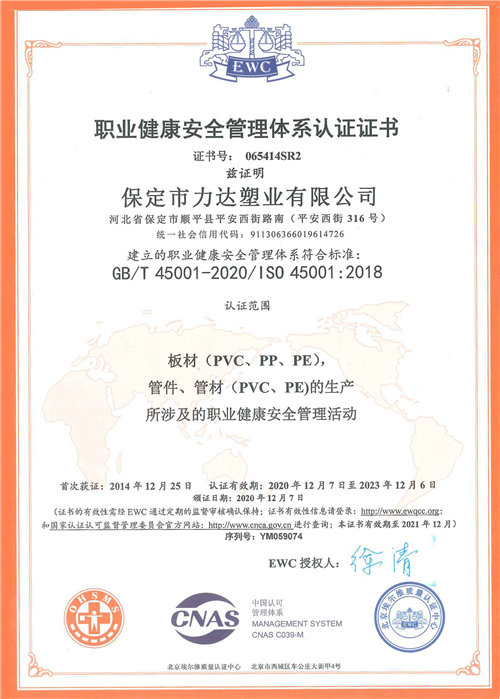Aug . 14, 2024 07:03 Back to list
Exploring the Benefits and Applications of Thermoplastic Welding Rods in Various Industries
Thermoplastic Welding Rods An Essential Tool for Strong Bonds
Thermoplastic welding rods are fundamental components in the field of thermoplastic welding, a process that combines heat and pressure to join two surfaces made of thermoplastic materials. Characterized by their ability to be heated, reshaped, and cooled without losing their chemical properties, thermoplastics are ideal for a variety of industrial applications, ranging from automotive and aerospace to construction and consumer goods. This article explores the significance of thermoplastic welding rods, their applications, and the benefits they offer.
Understanding Thermoplastic Welding
Thermoplastic welding involves techniques such as hot air welding, extrusion welding, and laser welding. These methods utilize welding rods made from thermoplastic materials to create robust joints that are often stronger than the base materials themselves. The rods are typically heated and melted at their ends, allowing the molten material to merge with the surfaces being joined. As these materials cool down, they solidify, forming a permanent bond.
Materials and Types of Welding Rods
Thermoplastic welding rods come in a variety of materials, most commonly including polyethylene (PE), polypropylene (PP), polyvinyl chloride (PVC), and polystyrene (PS). Each type of rod possesses unique properties suited for specific applications
1. Polyethylene (PE) Rods Known for their excellent chemical resistance and flexibility, PE rods are often used in industries where corrosion is a concern, such as water treatment and chemical storage.
2. Polypropylene (PP) Rods With their high melting points and good fatigue resistance, polypropylene rods are suitable for automotive and industrial applications.
3. Polyvinyl Chloride (PVC) Rods Durable and resistant to environmental degradation, PVC rods are frequently used in construction and plumbing.
4. Polystyrene (PS) Rods These rods are known for their rigidity and excellent clarity, making them ideal for electronic and decorative applications.
thermoplastic welding rod

Each type of welding rod is designed to melt and fuse at optimal temperatures, ensuring that the final weld is strong and reliable
.Applications of Thermoplastic Welding Rods
The versatility of thermoplastic welding rods makes them applicable in various industries. In the construction sector, welding rods are used to join panels, sheets, and pipes made of thermoplastic materials, ensuring watertight seals and structural integrity. In the automotive industry, they facilitate the repair of plastic components, thus extending the lifespan of vehicles and reducing waste.
Moreover, thermoplastic welding rods are instrumental in manufacturing signage and displays. The ability to create seamless joints allows for aesthetically pleasing designs without compromising strength. Additionally, in the medical field, thermoplastic welding is used to fabricate devices and components, meeting stringent hygiene and durability standards.
Benefits of Using Thermoplastic Welding Rods
Using thermoplastic welding rods offers several advantages. First and foremost, the welding process is efficient and can be performed both manually and with automated systems, making it suitable for high-volume production as well as bespoke manufacturing. Furthermore, the welds produced are generally stronger and more durable than traditional adhesive bonding, reducing the risk of joint failure.
Another significant benefit is the ability to reprocess thermoplastics. If a product made from thermoplastic materials needs to be repaired, the welding rods allow for easy re-welding, making them environmentally friendly by promoting reuse.
Conclusion
Thermoplastic welding rods are integral to the modern manufacturing landscape, enhancing the capabilities of thermoplastic welding techniques. Their diverse materials, coupled with the range of applications, make them invaluable in many industries. As technology evolves and sustainability becomes increasingly important, the role of thermoplastic welding rods is likely to expand, further solidifying their importance in construction, automotive, medical, and countless other applications. Embracing these tools today can lead to innovative solutions for tomorrow's challenges.
-
High-Quality PPR Pipes and Fittings Durable ERA PPR & PVC PPR Solutions
NewsJul.08,2025
-
Black HDPE Cutting Board - Durable, Non-Porous & Food Safe HDPE Plastic Cutting Board
NewsJul.08,2025
-
High-Quality CPVC Panel Durable HDPE & PVC Panels Supplier
NewsJul.08,2025
-
Double PE Welding Rod Supplier - High Strength, Durable & Versatile Welding Solutions
NewsJul.07,2025
-
High-Quality PVC-O Pipe Supplier Durable 75mm PVC Pipe & Connections Leading PVC Pipe Company
NewsJul.07,2025
-
HDPE Drainage Pipe Supplier – Durable & Corrosion-Resistant Solutions
NewsJul.06,2025

